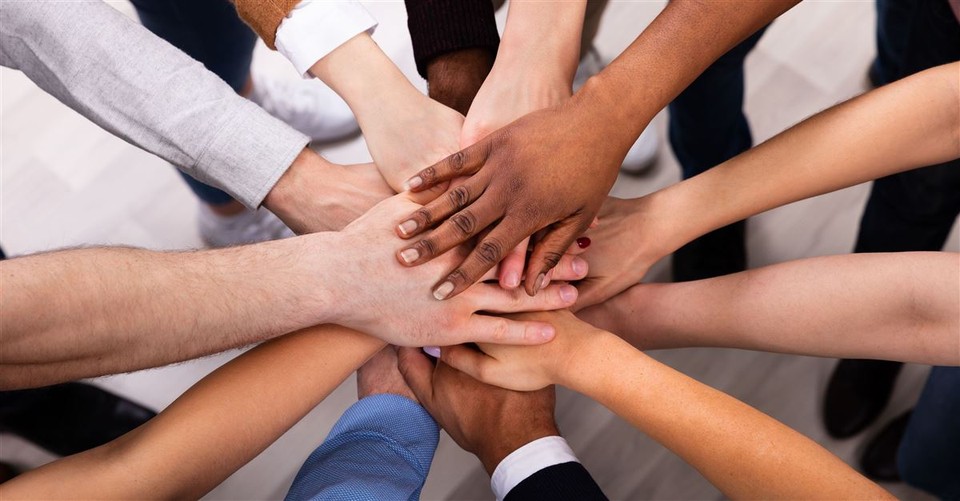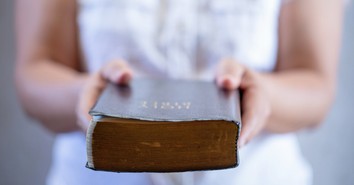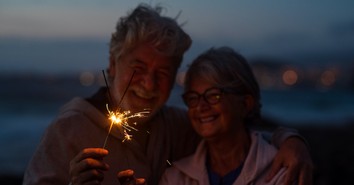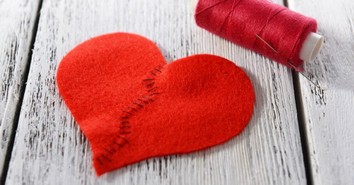How to Be the Bridge : Practical Steps to Racial Reconciliation

Racial reconciliation has been a hot topic in recent years, not just in Christian circles. The phrase itself may evoke a range of emotions in people, but at its heart the practice of racial reconciliation is complicated, messy and uncomfortable. Latasha Morrison has jumped headfirst into the messiness of this mission, wading through the hard conversations in search of the hope that can only be found on the other side.
Morrison founded the Be the Bridge group in 2016, and her book of the same name was recently released. It gives steps for the reader to form their own Bridge groups, with a process that is easy on paper, but challenging in practice. “I like to tell people that this is going to be uncomfortable,” Morrison said over the phone. “It’s going to be hard and you’re going to want to quit.” But she continues that this work is absolutely worth it and she is "excited about what God is doing in the hearts of people."
What Does it Take to Reconcile?
Be the Bridge has three essential steps to reach reconciliation: Lament, Confession, Reparations. Through those three things, we can work to find peace with our neighbors.
The process of lament begins with breaking down false historical narratives. These painful moments in history are hard to read, forcing me more than once to put the book down and walk away. But understanding the past is essential to understanding where we are now and what influence these painful events have had on our neighbors, our communities and our churches. Morrison says that “when your blinders are removed, it’s about relearning and readjusting and recalibrating your belief systems… and that’s painful work. It’s awkward and uncomfortable.” Even worse, she continues, “a lot of people stop because it’s too painful for them.”
In 2014, Morrison began meeting with a group of 11 women who would eventually become part of her first Bridge group. They’d spent a few months tackling those hard conversation and building relationships, when unrest in Ferguson, MO began following the death of 18-year-old Michael Brown. Morrison says the conversations that came out of the group following this news “brought about a lot of raw discussion… We were able to give them [majority white members] a different perspective that they would never have gained without being in proximity in our relationship with people.”
Proximity is another important aspect of racial reconciliation, Morrison explains. “Proximity and relationship has to be intentional… you have to be willing to listen to people and learn from people… and be very intentional about how you come into that space.” There are plenty of people, she says, who are proximate to diverse people, but there is no internal change. Part of reconciliation involves seeking to understand that person, even the parts that are uncomfortable, and seeing some change in your own heart.
Moving from Lament to Confession
But it is only through sitting in that painful period of lament that we can come through to confession. This is another step that rubs some majority culture people the wrong way. When asked to confess these past events, many will pipe up with “but I didn’t do that. It’s not my fault.” It’s in this moment that Morrison wisely turns to Scripture, and the story of Ezra.
In Ezra 9, the prophet is told that the people of Israel have been following the practices of their pagan neighbors, disobeying God’s commands. When Ezra hears this, he tears his clothes and pulls out his hair in despair. He later prays to God:
“I am too ashamed and disgraced, my God, to lift up my face to you, because our sins are higher than our heads and our guilt has reached to the heavens. From the days of our ancestors until now, our guilt has been great.”
Ezra pleads before the Lord, for our sins. He does not point a finger at his sinful neighbors, and he does not ignore the issue because it was not something that he participated in. Ezra understood the severity of the Israelites’ crime, and he felt deep shame over it. Enough to plead before the Lord, in fact. Morrison explains that those in the majority culture should feel the same lament that Ezra did, and it should move us to the same place of confession.
How Can We Make it Right?
The final step to reconciliation is reparations – something that Morrison urges readers not to skip. Her book gives the example of a shopkeeper who hires an employee and agrees to pay him $500 a week. After several weeks, the employee pulls the shopkeeper aside and says she’s only been paying him $300 a week. The shopkeeper apologizes profusely for the mistake and agrees that it won’t happen again moving forward.
“Have I made things right,” Morrison asks? “Are we reconciled?”
The answer is a resounding no.
In the same way, majority culture people need to embrace the idea of reparations, in whatever way they can, to reach true reconciliation. Morrison writes that this can look like anything from using your resources to open a memorial or museum, to passing the microphone to a minority person, raising up their voice over your own.
Morrison writes that reparation is not a punishment, it’s acknowledging that injustices robbed some communities of their opportunities, wealth or safety so that other communities could have those things. Reparation, therefore, "is about repaying or returning those things so as to restore equity."
Is This a One-Sided Issue?
At face value, racial reconciliation seems like a one-sided issue. White people (in general) were responsible for enslaving and mistreating black people (in general), so does racial reconciliation mean white people do all the work to make it better? Not at all, Morrison believes.
That’s one of the more interesting parts of her book, that she discusses ways that both majority and minority cultures have to step up to shine a light on injustice. When she talks about taking steps towards confession and acknowledging racism, she admits there will be a lot of shame and guilt on both sides. For those of African descent, it may mean taking a hard look at the painful ways their ancestors were mistreated, or the ways the community values lighter skinned individuals more than those with darker skin.
For those of European descent, it may mean admitting your own family’s connection to racism or slavery, or ways those institutions have benefited you directly or indirectly. Either way, it’s uncomfortable. “This shame and guilt,” Morrison writes, “the shame and guilt of both White and non-White people – can keep us from reckoning with the truth.”
But Morrison even goes beyond this, diving into the issue of colorism that she has experienced in the African American community. She explains how this “caused deep divisions within our community as lighter-skinned African Americans are sometimes treated with contempt by those with darker skin.” It’s something that she herself had to confess in order to move into a better place of loving both herself and others with darker skin.
Sin runs deep in our world, reaching into every community, no matter the color of their skin. “The sin of racism – as well as my sin of colorism – disrupts God’s order of justice and righteousness,” she writes. She continues:
“As people of color, it’s easy to point to the injustices perpetrated against us. We can bring attention to atrocities such as slavery, the unjustified taking of native lands, and the internment of Japanese Americans during World War II … And it can be tempting to bypass our own personal confession as we wait for the confession from others. But that’s not the way of bridge builders.”
Clearly, this work is for everyone. And when Morrison said it would be difficult, she didn’t have one people group in mind. The work of reconciliation, messy as it is, is a group effort.
Building on a Foundation of Love
Morrison never promises this work will be easy. But for her, verses like John 13:35 bring hope.
“By this everyone will know that you are my disciples, if you love one another.”
“I think what’s important in this work is to really see people as image bearers of God,” Morrison says. And that’s what is truly at the heart of this book. One of the main themes of Be the Bridge is simply to sit down with someone and listen to them. Listen to their history, their cultural experiences, share in their pain and their joy, and come to have a deeper understanding of each other.
Morrison’s belief is that unity can be found in diversity. She writes that “too many Christians believe that the ultimate goal should be seeing the world without color.” But “in the love of the family of God, we must become color brave, color caring, color honoring, not color blind. We have to recognize the image of God in one another.”
That’s important for Morrison and the mission of racial reconciliation – looking at another human and seeing them as God sees them. She explained that we as believers should be leading the charge of reconciliation. We have already experienced the joy and hope of Jesus sacrificing himself in order for us to be reconciled to God. Therefore, we who have been forgiven much must be quick to show that same grace and forgiveness to others.
This is a challenging book for any Christian, regardless of their history or culture. Morrison admits that this work is not for everyone, and not everyone is going to “get it.” Her prayer is that the Holy Spirit would be at work in some people’s hearts, to open their eyes to this injustice and help them to have a heart for this mission. “It doesn’t take a million people to change the world,” she says, “but just a few dedicated people that are given over to the Kingdom of God.”
Want to learn more? Be the Bridge: Pursuing God’s Heart for Racial Reconciliation can be ordered online. You can also read more about Be the Bridge groups and Latasha Morrison’s mission at Be the Bridge.com.
Photo credit: Getty Images/Andrey Popov
Publication date: October 28, 2019
Originally published October 28, 2019.







